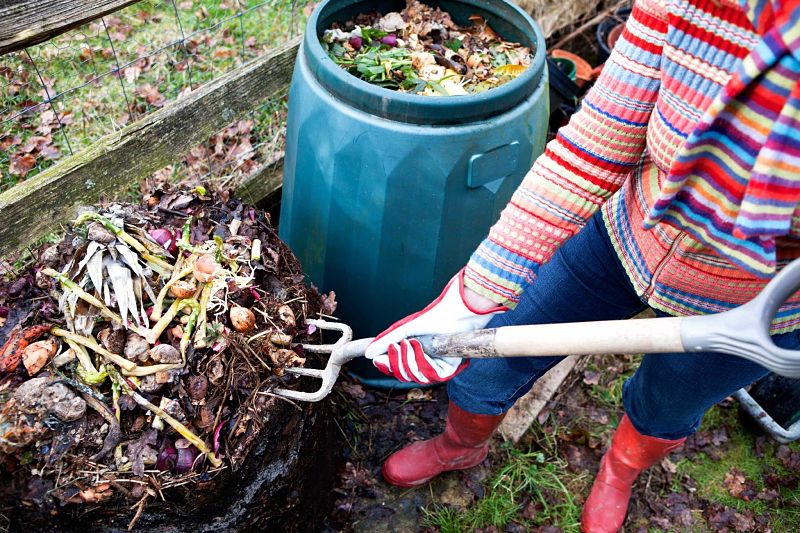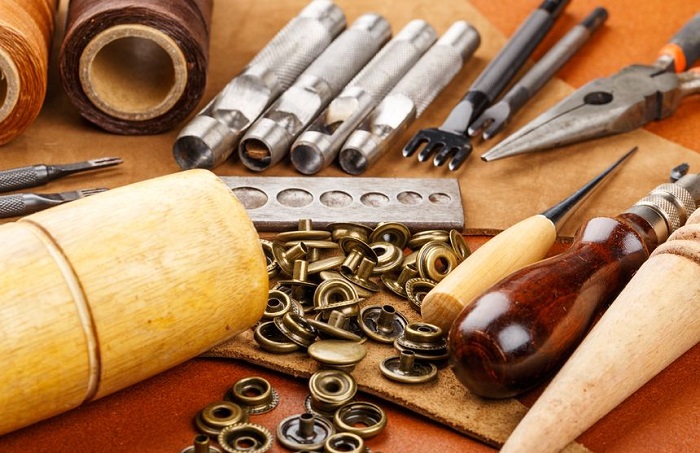Composting for the first time can seem like a daunting task. How can you guarantee the best conditions so that your compost doesn’t end up in a disastrous way? Well, we have good news for you, since fortunately composting is not as difficult as it seems.
How to Compost Made Easy?
Composting is as simple as reserving a space and adding organic material little by little. And the results are well worth it – you’ll have healthier plants, a larger garden harvest, and less food waste. Here’s what you need to know to start composting right away.
How can I prepare my compost pile?
The first thing you should do before you start making your compost pile is choose a location. The ideal location should be dry, shaded, and located near a water source. If you don’t have a shady spot, you can still compost. The only detail is that you will need to be adding water to it along the way (more on that below).
The ideal space should be 1 cubic meter (1 meter x 1 meter x 1 meter). You can outline and contain your compost pile using a wire circle or plastic compost bin, or you can leave it uncovered.
The system you choose depends on how much time and money you want to invest. An open pile is the least expensive and easiest way to start, although it can attract pests in some places.
What should I put in my compost?
To build a compost pile, you will need to add about 3 parts brown materials to 1-part green materials. Brown materials include things like dead leaves and plants, shredded paper or cardboard, straw, wood chips, and sawdust. All of these are rich in carbon.
Green materials include clipped grass, coffee grounds, fruit and vegetable scraps, and most kitchen scraps. These are high in nitrogen. Keep this recipe in mind and your compost pile will thrive. This is because achieving a good carbon / nitrogen ratio gives your pile what it needs to break down quickly and without odors.
What should I not put in my compost?
The composting process works best when you avoid adding too much high-nitrogen material. You should also avoid adding anything to your pile that can attract pests or is processed with harmful chemicals.
For any standard compost, these products include meat and bones, dairy products, pet waste, oils, most bioplastics, wasted food, and any plant sprayed with pesticides or herbicides.
And while it probably goes without saying, we’ll say it anyway: don’t add any metal, glass, or plastic of any kind to your compost, as those aren’t going to break down anytime soon.
Should I water my compost pile?
If you had this question, it is very important that you solve it. You should always keep your compost moist to support the microorganisms that live in it. These need moisture to be able to do their job.
If the climate where you live is typically dry, that could mean you will need to water your pile occasionally. Just avoid completely soaking your pile. Moistening it a little is more than enough.
Do I have to flip the stack?
Turning and stirring your compost will help it aerate, which will speed up the breakdown of composting materials. This also reduces the chance that your pile will become smelly.
A large pitchfork is the best tool for turning your compost during its early stages. A shovel may work best when the pile has already started to break down and separate. Some closed compost bins do not require the material inside to be turned over.
What if you turn the compost over is too much work?
If you don’t have the time or strength to turn your compost pile the old-fashioned way, using a rotary compost can be a good option. These highly durable composters do most of the work for you. All you have to do is turn the lever (in most cases).
Rotating compost bins break down organic matter faster than stationary compost bins or piles, as they can be turned more often and more efficiently. They come in different sizes, but keep in mind that the larger the compost bin, the more force you will require. If you suffer from chronic pain, something smaller might be your best option.
How long will it take for my compost to mature?
This will depend directly on the content of your compost, how fine and shredded the materials are, and what type of compost pile you use. A basic pile layered in the correct ratio and turned over several times a year will easily break down for the next gardening season.
Composting material in a sealed container will decompose in as little as four weeks, if the correct ratio of carbon and nitrogen is added and turned regularly. If you prefer to dump your food waste in a low-maintenance pile and not exert much effort, it will still break down, eventually.
What can I do with it when it’s ready?
Rather, what can’t you do? A successfully prepared compost has many beneficial uses. One of the best you can give it is to make raised garden beds or use it in pots, you can also use it when you go to transplant a plant, to make compost tea and to feed perennials.
You’ll know your compost is ready once it looks dark, crumbly, and even.
What if I don’t have outdoor space? Can I still compost?
Don’t worry, you can compost both indoors and outdoors, although composting indoors is a bit different. If you have space in your garage or on a covered patio, a rotary compost can work very well. If you need to compost inside your home, a worm compost does the job very easily. You just have to add minced food.








